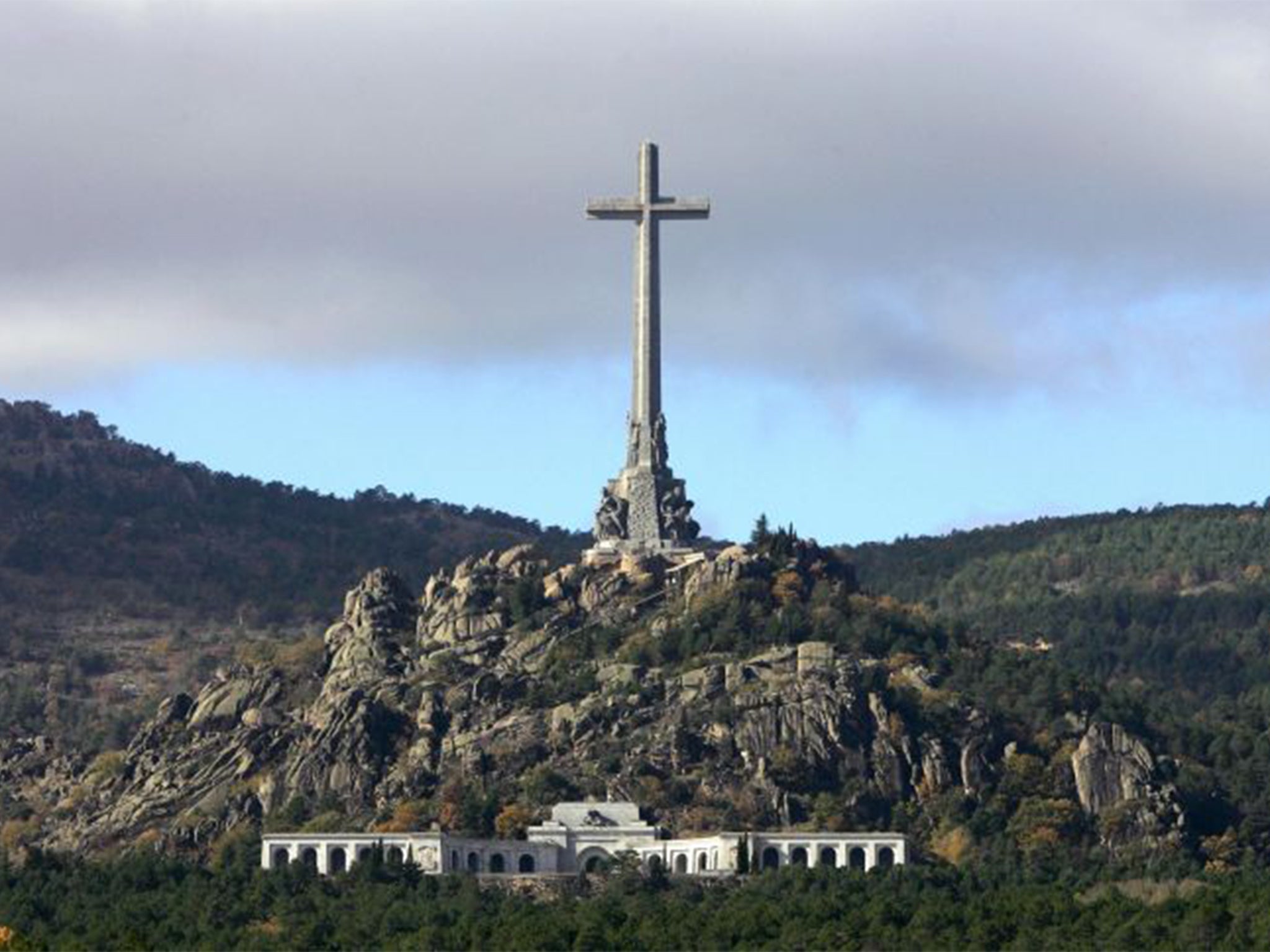Spanish Civil War: Move to exhume victims from mass grave in Valle de los Caídos sparks anger
The relatives of brothers murdered by Franco’s regime want them removed from a mass grave to identify their remains

Your support helps us to tell the story
From reproductive rights to climate change to Big Tech, The Independent is on the ground when the story is developing. Whether it's investigating the financials of Elon Musk's pro-Trump PAC or producing our latest documentary, 'The A Word', which shines a light on the American women fighting for reproductive rights, we know how important it is to parse out the facts from the messaging.
At such a critical moment in US history, we need reporters on the ground. Your donation allows us to keep sending journalists to speak to both sides of the story.
The Independent is trusted by Americans across the entire political spectrum. And unlike many other quality news outlets, we choose not to lock Americans out of our reporting and analysis with paywalls. We believe quality journalism should be available to everyone, paid for by those who can afford it.
Your support makes all the difference.A Spanish court is to decide whether to allow the exhumation of bodies from one of the country’s most controversial civil war mass graves, in a move that is certain to provoke anger on both the right and the left of the political divide.
The families of two brothers murdered by the Franco regime in the 1936 to 1939 conflict have asked a court in El Escorial to order an exhumation at the Valle de los Caídos, or Valley of the Fallen, the huge, Francoist monument that lies outside Madrid. They hope to identity the remains of their relatives, before giving both men a proper funeral.
The monument is also the final resting place of Franco himself, albeit inside the church, rather than on the grounds which hold the mass graves. If the family is successful, it will be the first time relatives of those killed in the conflict, which heralded almost 40 years of fascist dictatorship in Spain, have used the country’s Historic Memory law to recovery bodies from the Valley of the Fallen.
For many, the site, with its 150m cross, is a symbol of hatred and an unnecessary glorification of Franco and his regime. For others, it is a shrine encapsulating glory for Spain, and a place to pay homage to the former general who died in 1975.
As well as Franco, the monument is also where some 30,000 people killed in the conflict are interred, although none have such a splendid tomb as the former dictator.
Manuel Lapena, and his younger brother, Antonio, were early members of the CNT trade union, an anarchist group that was banned by Franco’s administration. They were both arrested in July 1936 in a village near Zaragoza and days later Manuel was dragged out of prison and shot dead by a band of right-wing activists before being buried nearby.
Antonio escaped from prison but later made the fatal mistake of turning himself in. After serving a short sentence, he too was lined up by a cemetery wall and shot, before being buried in a local mass grave.
The families of both brothers believe their remains were transferred to the Valley of the Fallen in 1959 when the government took the decision to move a number of mass graves across Spain to the site.
“It’s about recognising a family’s right to bury their grandfather wherever they wish,” Eduardo Ranz, the families’ lawyer told El Pais. “The state has to pay for this, because it is responsible for the victims’ execution and for their transfer to the Valley of the Fallen.”
The application, which will make progress only if the families can show that there are no remaining bodies in the mass graves near Zaragoza, was made possible because of the Historic Memory law passed by the last Socialist government in October 2007.
The law – one of the few in Spain passed to address the dictatorship period – allows relatives to recover the bodies of loved ones in order to hold a proper funeral. In addition it condemned the Franco regime, the first time the dictatorship had faced official censure.
The Valley of the Fallen is also likely to come under the spotlight next month, on the 40th anniversary of Franco’s death. The former Spanish leader is the only person buried at the site who was not killed in the civil war.
He is however, one of two men buried in the main basilica. Jose Antonio Primo de Rivera, the founder of the Falange movement in Spain, was executed by the government on 20 November 1936, 39 years to the day before Franco’s own death.
As such the date is commemorated each year by nationalistic sympathisers.
Join our commenting forum
Join thought-provoking conversations, follow other Independent readers and see their replies
Comments